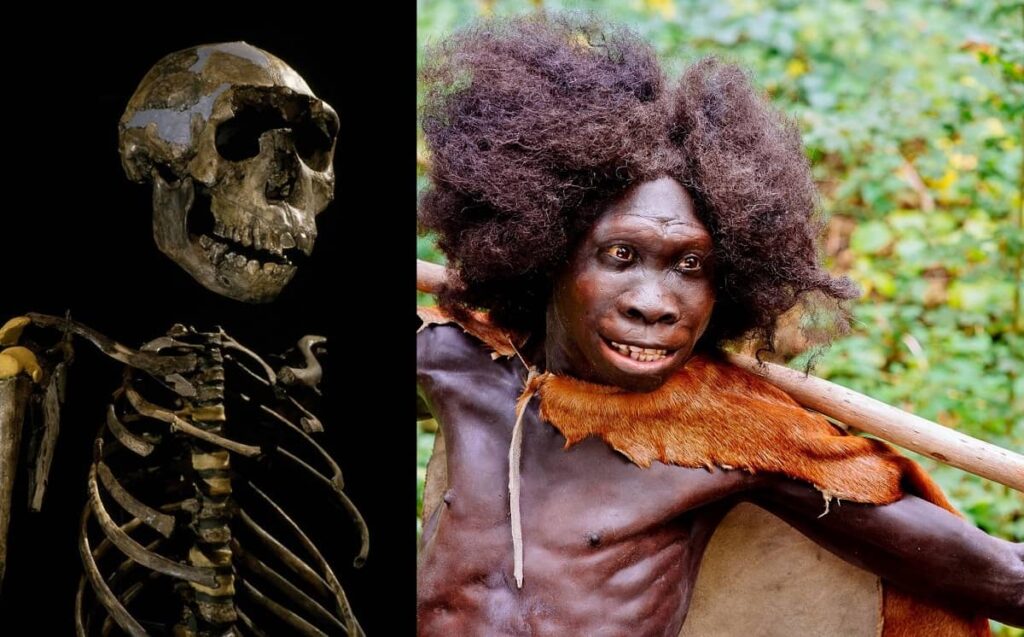
Who is the Turkana Boy?
Turkana Boy or Turkana Human is a fossil of a Homo ergaster youth (also referred to as African Homo erectus) presumed to have lived around 1.5 million years ago.
The skeleton which was discovered near Lake Turkana in Kenya is today described as “the most complete early hominin skeleton ever found”.
How the Turkana Human was discovered
In 1984, Kenyan palaeontologist Kamoya Kimeu while working on the bank of the Nariokotome River located close to Lake Turkana in Kenya came upon what is now one of the most scientifically valuable hominin fossils ever discovered.
As a result of the discovery place, the skeleton, presumed male, was called the “Turkana Boy”, or the “Nariokotome Boy” in some reports.
According to researchers who later named the fossil KNM-WT 15000, the skeleton belongs to a Homo ergaster youth (or African Homo erectus) who lived 1.5 to 1.6 million years ago.
When the skeleton was reconstructed, the Turkana Boy looked something like this:

How the Turkana Boy died
The exact cause of Turkana Boy’s death has not been established, however, early analysis of the rib bones and other parts of his spine showed that the Turkana Boy might have suffered from a congenital disorder, most likely dwarfism or scoliosis (a medical condition in which a person’s spine is curved sideways).
Later studies found that a spine injury called “spinal disc herniation” probably killed the Turkana Boy.
At what age did the Turkana Boy die?
The exact age the Turkana Boy died has not been determined – however, it has been established that he was still in his youth when he died and was yet to reach adulthood.
Anatomy of the Turkana Boy
Homo ergaster is an extinct species or subspecies of ancient humans who lived in Africa in the Early Pleistocene era. They are known for their height – studies have shown that Homo ergaster was way taller than their predecessors.
There is also evidence to suggest that the Homo ergaster might have been nearly hairless or born with naked skin – an adaptation presumed to have helped them survive in a hot and dry climate.
Turkana Boy compared to Lucy
Studies have found that the Turkana Boy was significantly taller than the famous Australopithecus fossil, Lucy, discovered in Ethiopia in 1974.
While Lucy’s height had been estimated to be about 1 m (3 ft 3 in) at her death, Turkana Boy was about 1.62 m (5 ft 4 in).
Also, because he was a youth, it is expected that he would have reached 1.82 m (6 ft) or more in adulthood, almost similar to the height of modern-day Homo sapiens.


